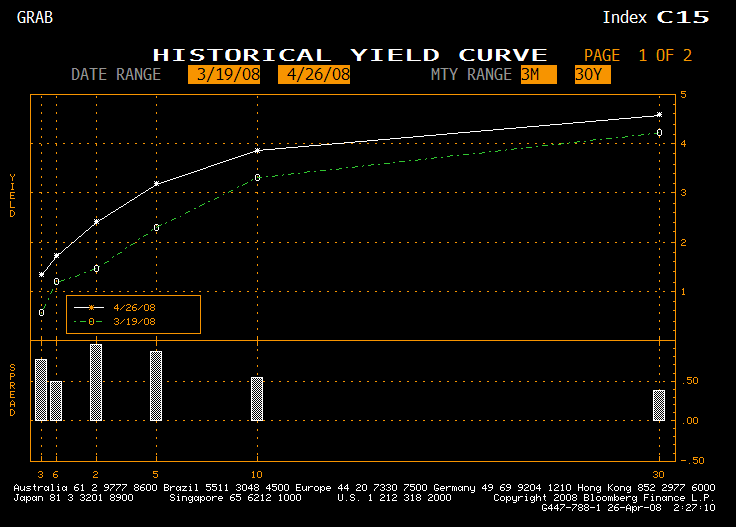One Dozen Notes on Our Manic Capital Markets
1) I think Ambac is dreaming if they think they will maintain their AAA ratings. Aside from the real deterioration in their capital position, they now face stronger competition. Buffett got the AAA without the usual five-year delay because he has one of the few remaining natural AAAs behind him at Berky. (Political pressure doesn’t hurt either… many municipalities want credit enhancement that they believe is worth something.)
2) I read through the documents from the Senate hearings on the rating agencies, and my quick conclusion is that there won’t be a lot of change, particularly on such a technical topic in an election year. And, in my opinion, it would be difficult to change the system from its current configuration, and still have securitization go on. Now, maybe securitization should be banned; after all, it offers an illusion of liquidity liquidity in good times, but not in bad times, for underlying assets that are fungible, but not liquid.
3) I am not a fan of Fair Value Accounting. But if we’re going to do it, let’s do it right, as I suggested to an IASB commissioner several years ago. Have two balance sheets and two income statements. One set would be fair value, and the other amortized cost. It would not be any more work than we are doing now.
4) Now, some bankers are up in arms over fair value, and I’m afraid I can’t sympathize. If you’re going to invest in or borrow using complex instruments that amortized cost accounting can’t deal with, you should expect the accounting regulations to change.
5) Just because you can classify assets or liabilities as level 3 doesn’t mean the market will give full credibility to your model. Accounting uncertainty always receives lower valuations. It as if the market says, :These assets will have to prove themselves through their cash flows, we can’t capitalize earnings here. The same applies to the temporary gains from revaluing corporate liabilities down because of credit stress. If the creditworthiness recovers, though gains will be reversed, and good analysts should lower their future earnings estimates when bond spreads widen, to the degree that present gains are taken.
6) The student loan market is interesting, with so many lenders dropping out. This is one area where the auction-rate securities market initially hurt matters when it blew up, but there was a feature that said that the auction rate bonds could not receive more than the student lenders were receiving. So, after rates blew out for a little while, now some the auction rate bonds are receiving zero (for a while).
7) After yesterday’s post, I mused about how much the high yield market has come back, and with few defaults, aside from those that should have been dead anyway. With liquidiity low at some firms, there will be more to come. Personally, I expect spreads to eclipse their recent wides as things get worse, but enjoy the bear market rally for now.
8) Many munis are still cheap, but the “stupid cheap” money has been made. Lighten up a little if you went to maximum overweight.
9) What’s the Big Money smoking? They certainly are optimistic in this Barron’s piece. One thing that I can find to support them is insider buying, which is high relative to selling at present. And, even ahead of the recent run, hedge funds (and many mutual funds) had been getting more conservative. Guess they had to buy the rally. On the other side, there is a sort of leakage from DB plans, as many of them allocate more to hedge funds and private equity.
10) Does large private equity fund size lead to bad decision making? I would think so. Larger deals are more scarce, and so added urgency comes when they are available. Negotiating for such deals is more intense, and the winner often suffers the winner’s curse of having overbid.
11) I am not a believer in the shorts being able to manipulate the markets as much as some would say. It’s easier to manipulate on the long side. Here is a good post at Ultimi Barbarorum on the topic.
12) Financials are the largest sector in the S&P 500.? Perhaps not for long… they may shrink below the size of the Tech sector at current rates, or, Energy could grow to be the largest.? Nothing would make me more skittish about my energy longs.? The largest sector always seems to get hit the hardest, whether Financials today, or Tech in 2000, or Energy in the mid-90s.



 A word before I start: I’m averaging two book review requests a month at present. I tell the PR people that I don’t guarantee a review (though I have reviewed them all so far), or even a favorable review. They send the books anyway.
A word before I start: I’m averaging two book review requests a month at present. I tell the PR people that I don’t guarantee a review (though I have reviewed them all so far), or even a favorable review. They send the books anyway.